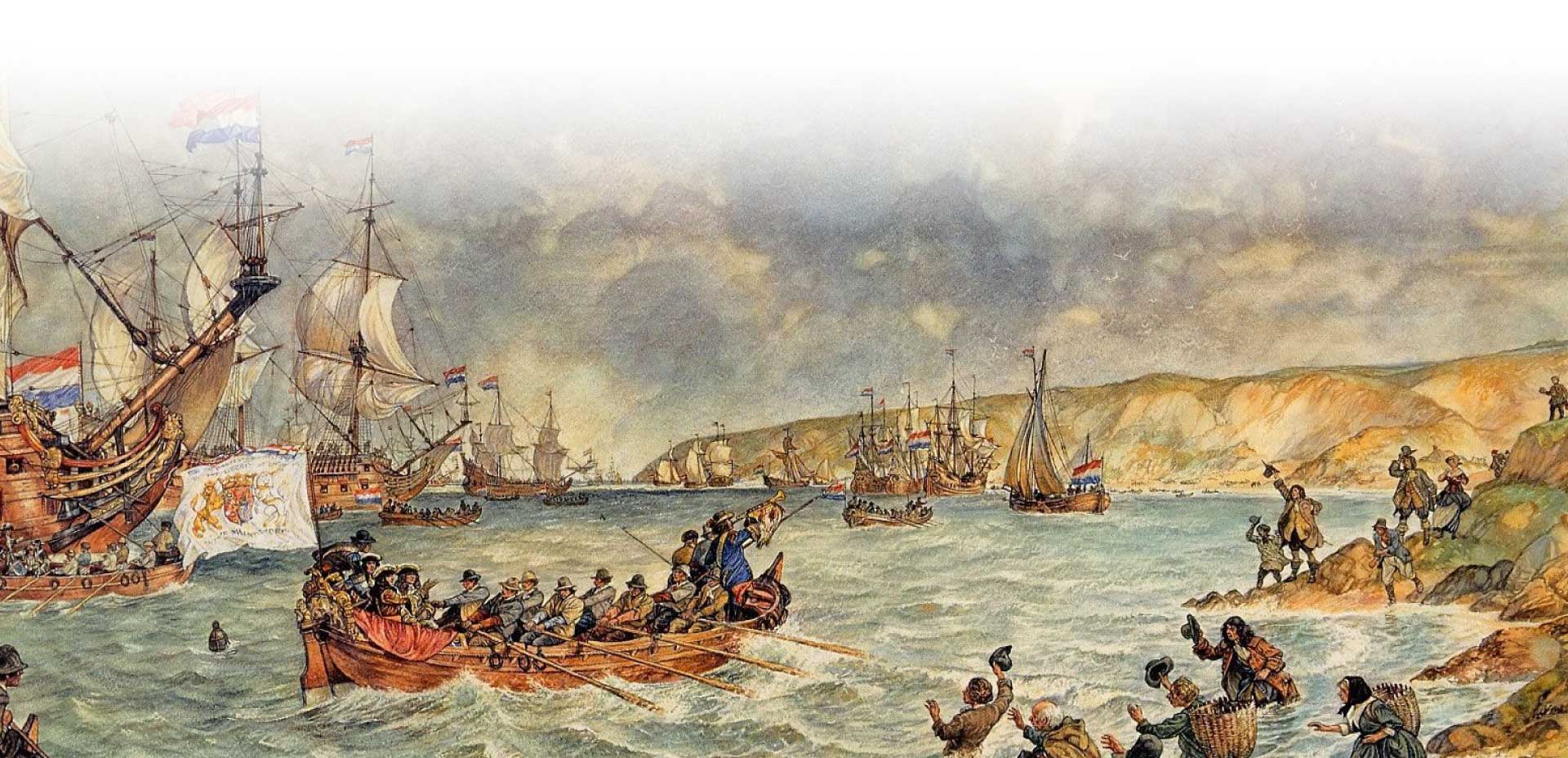Monmouth Martyrs
The last pitched battle on English soil was fought at Westonzoyland on the Somerset Levels and Moors. The Battle of Sedgemoor was the catastrophic final act of the doomed Monmouth Rebellion, the attempt by the Protestant Duke of Monmouth, the eldest illegitimate son of King Charles II, to raise the country against the Catholic King James II.
Monmouth landed at Lyme Regis on 11th June 1685, aiming to raise an army in the (largely Protestant) West Country. The rebellion attracted a good deal of support, and Monmouth crossed Somerset, including making his headquarters briefly at the historic George Inn at Norton St Philip.
With his ill-equipped and largely untrained soldiers, he faced the King’s army at Sedgemoor on 6th July. The defeat was followed by what came to be known as the Bloody Assizes, conducted by the notorious Judge Jeffreys. Across the region, from Taunton to Norton St Philip, the rebels were hunted down, put on trial and most were subject to the horrible traitor’s death – to be hanged, drawn and quartered. Monmouth himself was beheaded on 15th July in London.
Among those were six “martyrs” who were executed as traitors at Wincanton – Thomas Bowden of Bampton, Richard Harvey, Hugh Holland of South Petherton, William Holland of South Petherton, John Howell of Rode and John Tucker of Allington.
Image: The Morning of Sedgemoor, oil painting on canvas by Edgar Bundy, 1905, Tate Britain. By Wmpearl – Own work, CC0, https://commons.wikimedia.org/w/index.php?curid=19765014
The Merry Monarch’s wanderings
Boscobel in Shropshire is a long way from Wincanton. That was the starting point for the journey into exile of King Charles the Second. In the aftermath of the Battle of Worcester the King made a tortuous and potentially dangerous journey to reach the South Coast and take ship for exile on the continent for the duration of Cromwell’s Commonwealth.
The route he took is nowadays known as the Monarch’s Way and it passes Wincanton. On a dead-end lane on the north side of the town is a way-post that marks the route.
In an historical novel written in 1938, entitled Royal Escape, there is mention of an overnight stay near Castle Cary and travel the following day to Trent, near Sherborne: while a novel, such writings are woven round facts. One can, perhaps, imagine Charles and his escorting companions taking a route that might be considered slightly tortuous, flitting past Wincanton on its eastern heights, thus avoiding the more frequented ways as Castle Cary to Trent via Wincanton is not direct.
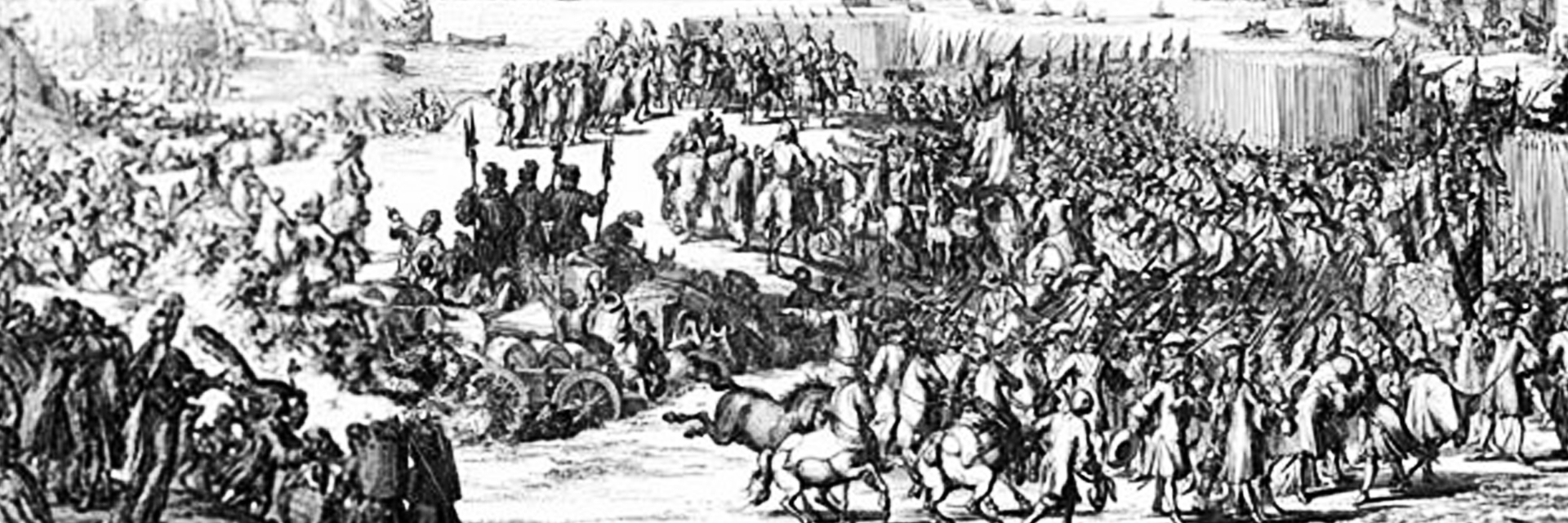
Going Dutch
The Glorious Revolution of 1688 marked a move towards a period of greater stability for England following the earlier times of the Tudor and Stuart monarchs, a time in which the “tide in the affairs of men” ebbed and flowed with the differing convictions held by the various monarchs and with their (sometimes) tumultuous personal lives.
Invited to become King by those of the Protestant aristocracy who had chased out James II (who seemed to be returning towards Catholicism following his marriage to his Italian second wife), William of Orange, James’ son-in-law, lodged overnight at The Dogs in Wincanton on his way to London, having landed in Torbay in late 1689. A plaque on the wall of this building in South Street commemorates this event.
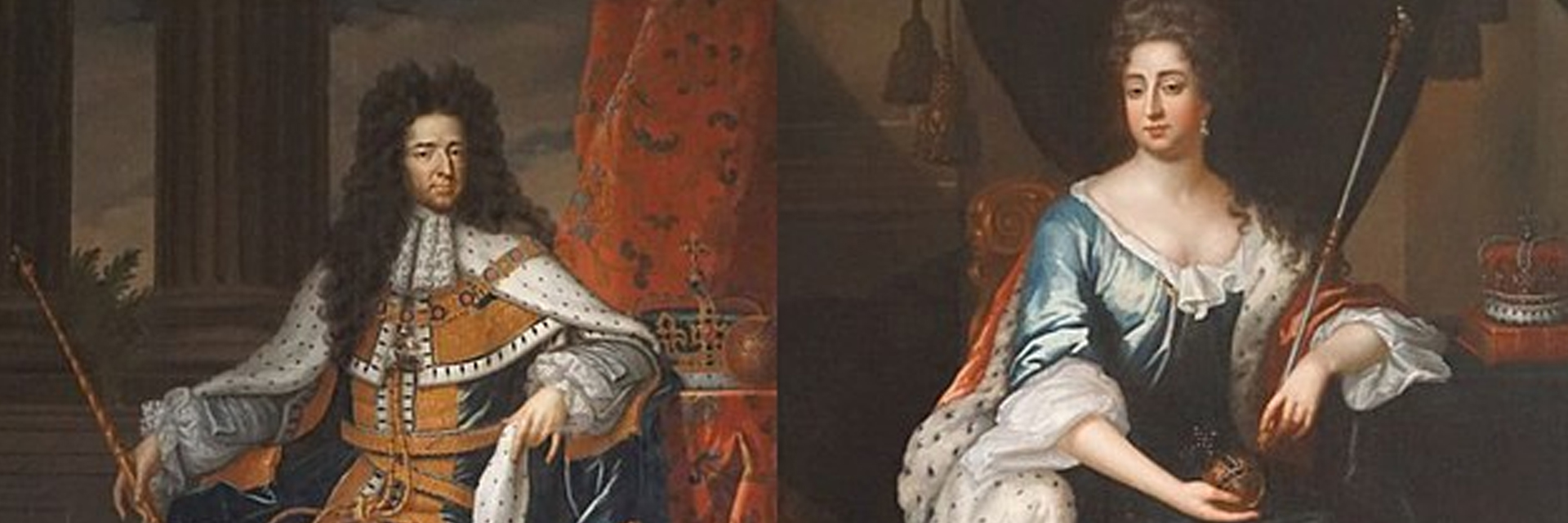
Going to The Dogs
Following the failed Monmouth Rebellion, King James II survived on the throne for a few more years, but was deposed in 1688 after the “Glorious Revolution.” This was the short campaign led by the Dutch prince, William of Orange, Protestant nephew of King James and married to the Catholic king’s Protestant daughter, Princess Mary.
There are Wincanton connections with what is sometimes known as the “bloodless revolution.” William landed in Devon on 5th November and the deposed king went into exile on 23rd December. Between those dates there was an event that is known as “the Wincanton Skirmish” on 20th November when a small English Army patrol led by an Irish officer, Patrick Sarsfield, clashed with a detachment of William’s Dutch army. The Dutch soldiers were actually Scots, led by Lieut. Campbell, who was one of the 12 killed in the fighting.
The Wincanton Skirmish was one of only two actual battles during William’s progress to London and the throne – the other was the Battle of Reading on 9th December.
After the skirmish, William, who would become King William III, but is more generally known as half of ”William-and-Mary,” stayed at Wincanton en route to London. He spent a night at The Dogs, the Grade I listed, 1650s manor house – the room where he slept is known as the Orange room.
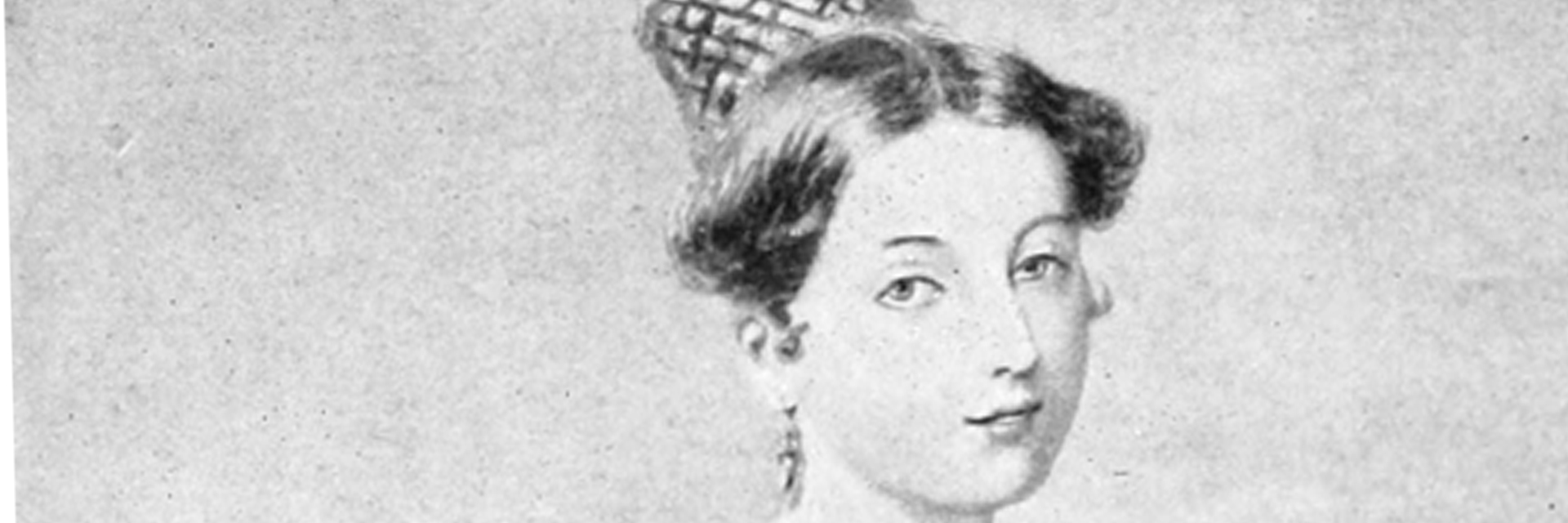
Princess Victoria travelling with Mother
Walk west along Wincanton High Street and shortly before the junction with North Street, look up. On the building that was once the Greyhound coaching inn there is a blue plaque. This marks the occasion when, in 1825, a six-year-old Princess, later Queen, Victoria spent the night at the Greyhound.
Her uncle, George IV was on the throne: the Greyhound was a relatively new building: the young princess was almost certainly travelling with her mother who wouldn’t let her out of her sight until, just aged 18, Victoria became Queen and put her foot down. Where she was going and why is not known but the fact of her stay is a matter of record.
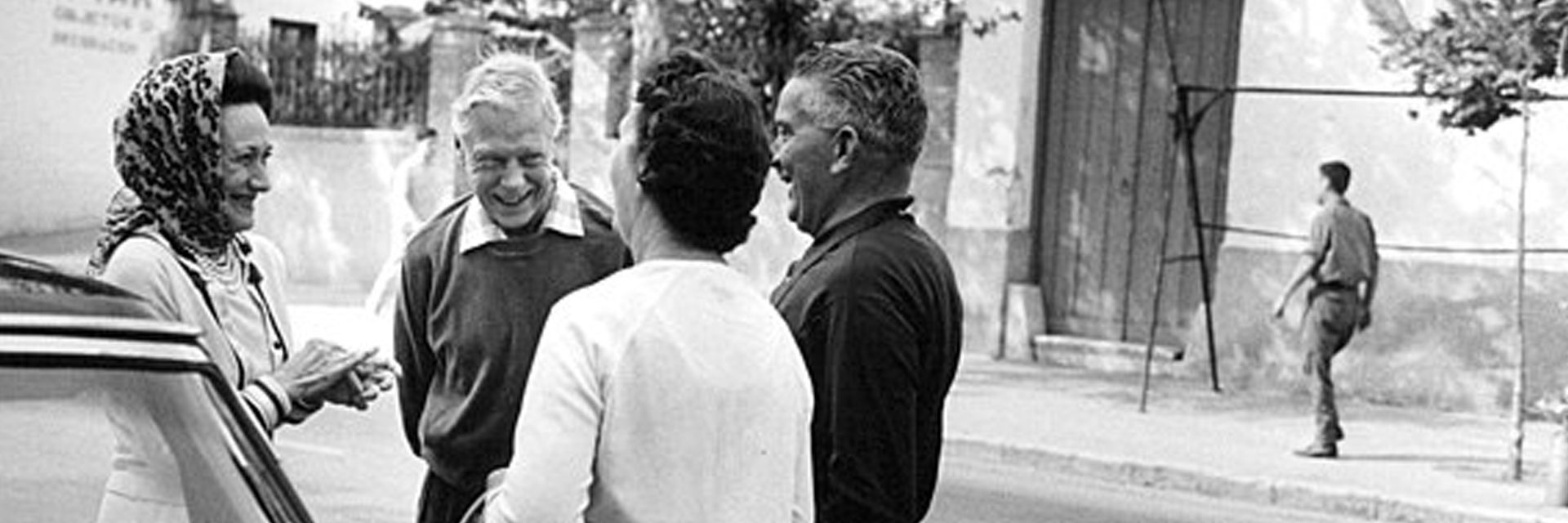
The eighth Edward
In the records of our Society there is a black and white photograph of a car travelling west from the direction of Bayford in July 1923. The Prince of Wales, later (and briefly) Edward VIII, is passing through Wincanton.
To where we know not, but he was known for his social life, spending weekends, or longer, at house-parties thrown by the “great and the good” of the era. News of his impending arrival obviously reached our town in time to allow some loyal citizens to greet the passing prince.
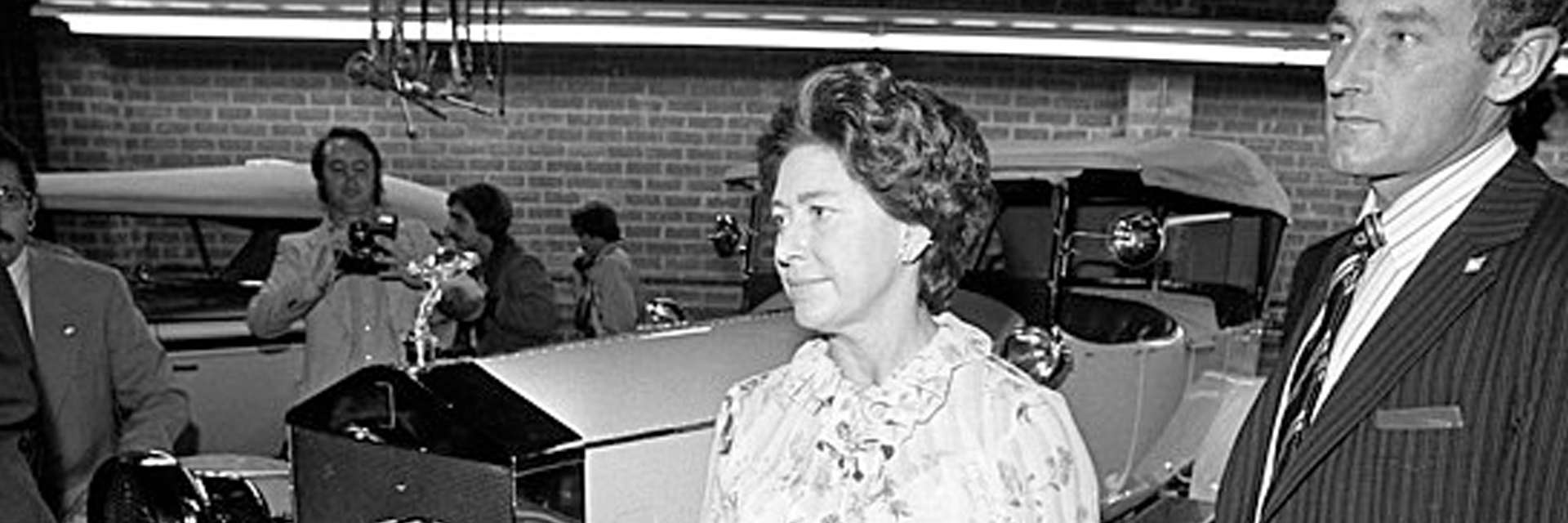
Princess Margaret makes an appearance
The Health Centre in Carrington Way (that no longer functions as such) was built in the early 1980s and opened by Princess Margaret, Countess of Snowden, a photograph in Society records attesting to the event. An integral member of what the late Duke of Edinburgh, Prince Philip, referred to as “the firm”, Princess Margaret undertook her share of visits and openings around the realm, of which this occasion was but one.
As a young woman, the younger sister of the late Queen Elizabeth II was accorded much press coverage as a glamorous socialite. Notable for an independent streak and a lifestyle that could cause raised eyebrows in some quarters upon occasion, in her later years she suffered from steadily increasing ill-health herself.
Image by Hoynck van Papendrecht, J. – https://nl.pinterest.com/pin/305822630933297117/, Public Domain, https://commons.wikimedia.org/w/index.php?curid=114211023
